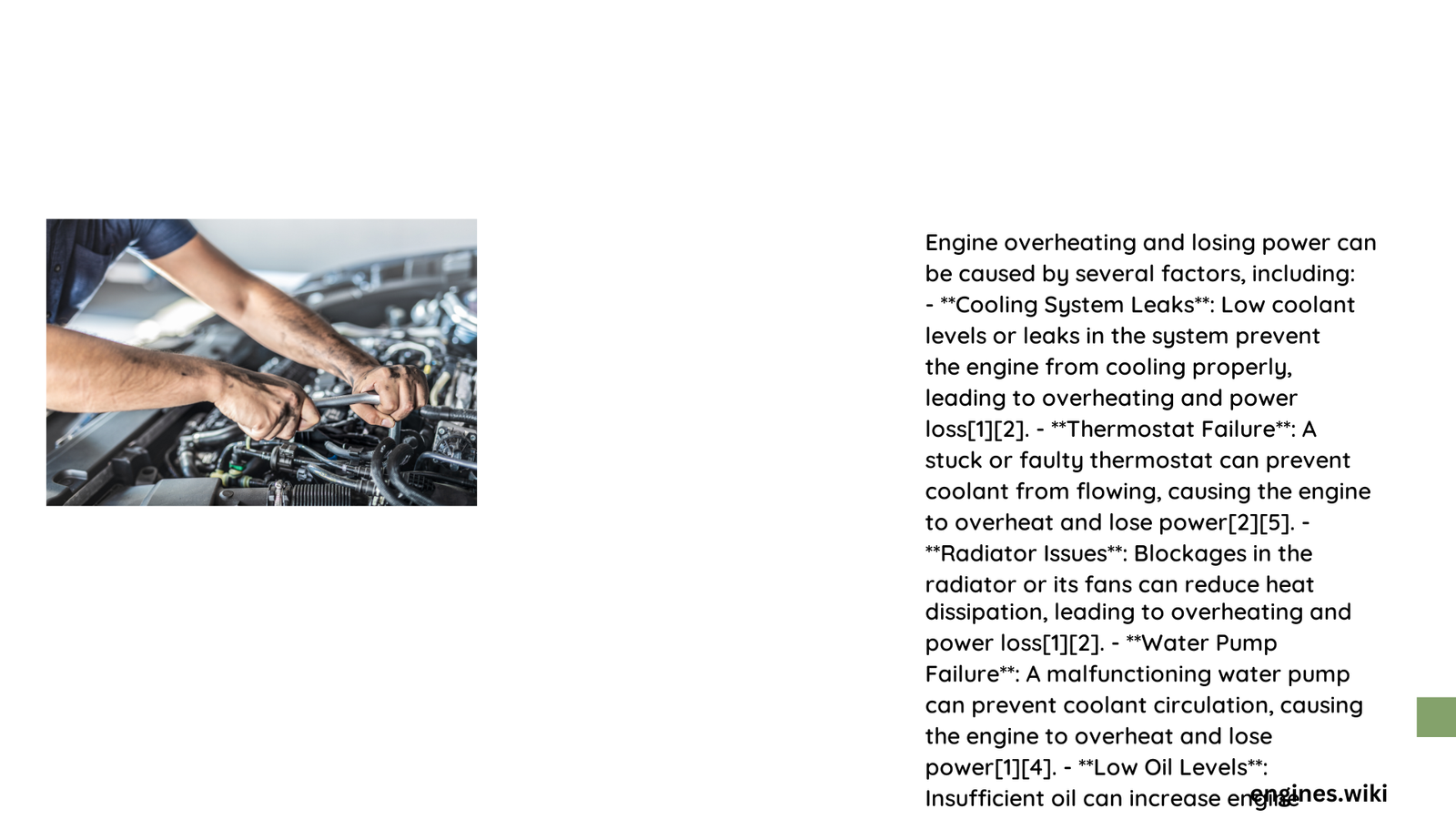Engine Overheating and Losing Power: A Comprehensive Technical Analysis
Summary
Vehicle engines experiencing simultaneous overheating and power loss represent a critical mechanical failure scenario. These symptoms often indicate complex systemic issues within the cooling and performance mechanisms, potentially causing catastrophic damage if not immediately addressed. Understanding the intricate relationship between temperature, mechanical components, and engine performance is crucial for effective diagnosis and resolution.
What Causes Engine Temperature Spike and Performance Degradation?
Root Mechanical Failures
When an engine overheats and simultaneously loses power, several interconnected mechanical systems are typically compromised:
- Coolant System Breakdown
- Insufficient coolant circulation
- Radiator blockages
- Pump malfunction
-
Thermostat failure
-
Thermal Stress Consequences
- Head gasket compression loss
- Cylinder wall micro-fracturing
- Valve seal degradation
| Component | Failure Probability | Performance Impact |
|---|---|---|
| Thermostat | 25-30% | Moderate |
| Water Pump | 15-20% | High |
| Radiator | 20-25% | Critical |
| Cooling Fans | 10-15% | Moderate |
How Do Temperature Increases Affect Engine Performance?
Thermal Expansion and Mechanical Stress
When engine temperatures exceed recommended thresholds (typically 220-240°F), multiple performance-degrading mechanisms activate:
- Molecular Structural Changes
- Metal component expansion
- Reduced mechanical tolerances
-
Increased friction coefficients
-
Lubrication System Compromise
- Oil viscosity reduction
- Accelerated wear on moving parts
- Decreased hydraulic pressure
What Diagnostic Steps Reveal Hidden Problems?
Systematic Troubleshooting Approach
- Initial Visual Inspection
- Check coolant levels
- Examine hose integrity
-
Inspect radiator for damage
-
Precision Diagnostic Techniques
- Compression pressure test
- Leak-down diagnostic
- Thermal imaging scan
How Can Owners Prevent Catastrophic Failures?
Proactive Maintenance Strategies
- Regular Coolant Replacement
- Follow manufacturer’s recommended intervals
- Use high-quality coolant mixtures
-
Monitor coolant condition
-
Temperature Management
- Install high-performance temperature sensors
- Use advanced cooling system additives
- Implement periodic system flush
What Are Potential Repair Costs?
Financial Implications of Engine Overheating
| Repair Type | Cost Range | Complexity |
|---|---|---|
| Thermostat Replacement | $150-$300 | Low |
| Water Pump Repair | $300-$750 | Moderate |
| Head Gasket Replacement | $1,000-$2,500 | High |
| Complete Engine Rebuild | $3,000-$5,000 | Critical |
Conclusion: Proactive Prevention is Key
Understanding the intricate relationship between engine temperature and performance allows vehicle owners to detect and mitigate potential failures before catastrophic damage occurs.

